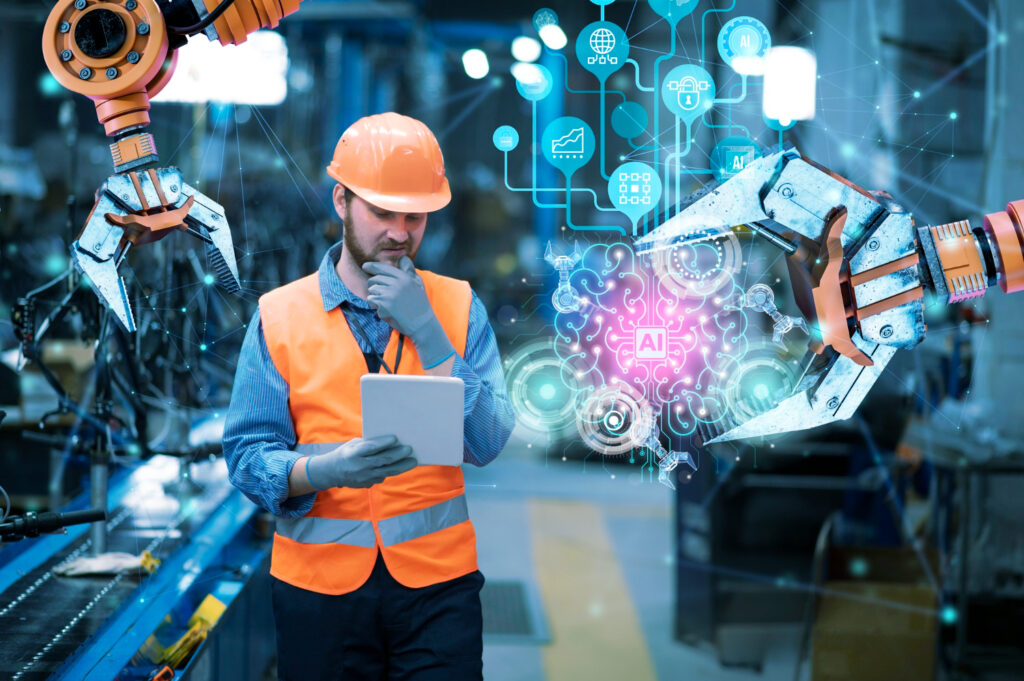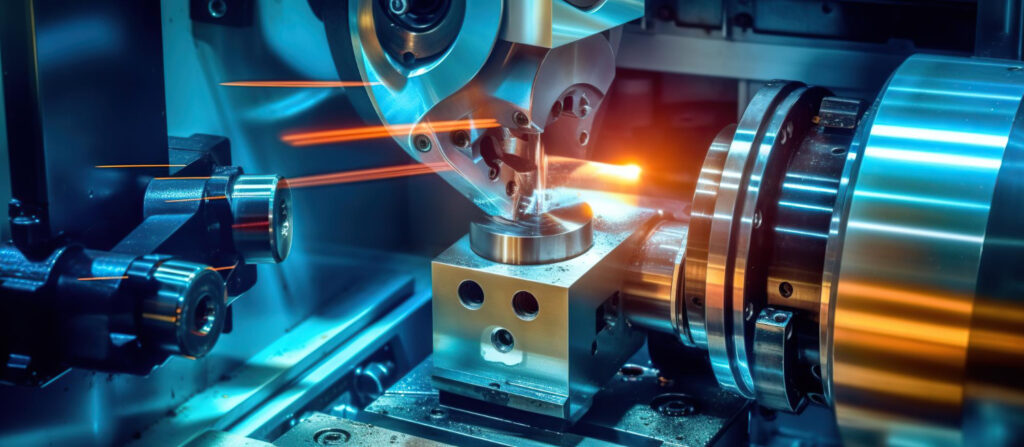In the dynamic realm of manufacturing, technological advancements have always played a pivotal role in shaping the industry’s landscape. The integration of cutting-edge machinery tools has not only increased efficiency but has also paved the way for unprecedented innovation. In this blog, we will delve into five revolutionary machinery tools that are transforming the manufacturing sector.
1. Smart Robotics: Revolutionizing Automation
One of the most significant strides in manufacturing technology is the advent of smart robotics. These highly advanced robots are equipped with artificial intelligence (AI) and machine learning capabilities, enabling them to perform complex tasks with precision. From assembly lines to material handling, smart robotics are streamlining processes and minimizing human intervention.

Smart robotic systems are designed to adapt to changes in the production environment, making them versatile and efficient. The incorporation of sensors and vision systems allows these robots to perceive and respond to their surroundings, enhancing safety and reducing errors. This technological leap not only boosts productivity but also opens new possibilities for manufacturers in terms of flexibility and scalability.
2. Additive Manufacturing: A Paradigm Shift in Production
Additive manufacturing, commonly known as 3D printing, has emerged as a game-changer in the manufacturing industry. Unlike traditional subtractive manufacturing processes, which involve cutting and shaping materials, additive manufacturing builds objects layer by layer. This innovative approach allows for intricate designs and the creation of complex geometries that were previously impractical or impossible.

The versatility of additive manufacturing extends across various materials, including plastics, metals, and ceramics. This has led to breakthroughs in rapid prototyping, custom part production, and even the manufacturing of components for aerospace and healthcare industries. As 3D printing technology continues to evolve, it promises to redefine the very nature of production, making it more accessible and efficient than ever before.
3. Internet of Things (IoT): Connecting the Manufacturing Ecosystem
The Internet of Things (IoT) has permeated almost every industry, and manufacturing is no exception. IoT in manufacturing involves connecting physical devices and machines to the internet, creating a network where data can be exchanged in real-time. This connectivity has given rise to smart factories, where every aspect of the production process is interconnected and optimized for efficiency.

IoT-enabled machinery provides manufacturers with invaluable insights into their operations. Sensors embedded in machines collect data on performance, maintenance needs, and even environmental conditions. This data is then analyzed to make informed decisions, predict potential issues, and optimize overall production efficiency. The result is a more streamlined and responsive manufacturing process that reduces downtime and enhances productivity.
4. Cognitive Computing: Enhancing Decision-Making
Cognitive computing, a branch of artificial intelligence, is making waves in the manufacturing sector by transforming how machines and humans interact. This technology goes beyond traditional programming, allowing machines to learn and adapt to new information. In manufacturing, cognitive computing systems can analyze vast datasets, identify patterns, and make data-driven decisions in real-time.

The application of cognitive computing in manufacturing extends to predictive maintenance, quality control, and demand forecasting. By harnessing the power of machine learning algorithms, manufacturers can optimize their production processes, reduce waste, and enhance product quality. As cognitive computing continues to evolve, it holds the potential to revolutionize decision-making across the entire manufacturing value chain.
5. Augmented Reality (AR) in Manufacturing: Bridging the Physical and Digital Worlds
Augmented Reality (AR) is breaking down the barriers between the physical and digital realms in manufacturing. AR technology overlays digital information, such as graphics, instructions, or data, onto the real-world environment. In the manufacturing context, this means that workers can receive real-time guidance and information directly within their field of view.

AR is transforming training processes by providing immersive and interactive training experiences. Workers can visualize complex assembly processes, troubleshoot issues, and receive step-by-step instructions, enhancing both efficiency and accuracy. Additionally, AR is being used for remote assistance, allowing experts to guide on-site personnel through tasks without being physically present. This not only improves collaboration but also reduces downtime and travel costs.
Conclusion: Embracing the Future of Manufacturing
The integration of these cutting-edge machinery tools marks a paradigm shift in the manufacturing landscape. From the precision of smart robotics to the limitless possibilities of additive manufacturing, and the connectivity offered by IoT, cognitive computing, and AR, these technologies are driving efficiency, innovation, and sustainability.
Manufacturers who embrace these advancements position themselves at the forefront of a new era in production. As we move forward, the synergy of these technologies is likely to redefine not only how goods are produced but also the very nature of manufacturing itself. In this rapidly evolving landscape, staying informed and adapting to these technological trends is not just a choice; it’s a necessity for those seeking to thrive in the future of manufacturing.


